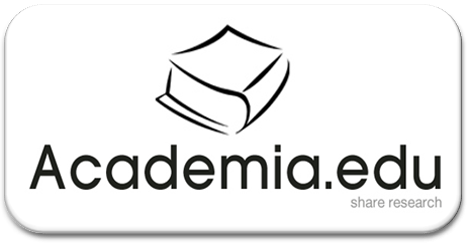Development of the Nagham Qur’an
Abstract
Al-Qur'an was revealed by Allah SWT in Arabic, which has a very beautiful language structure. To understand the meaning contained therein, the Qur'an must be read well and correctly. Reading the Qur'an well and correctly is inseparable from the reading rules contained in the science of tajweed. In addition, the Prophet also recommended reading the Qur'an with a good and beautiful voice. Because one of the elements of the perfection of the Qur'an is reading it well and beautifully. In the current context, reading the Qur'an in a good and beautiful way can also be termed nagham Qur'an or known as the art of reading the Qur'an. But in this case, the term is not fully applied by Qur'an readers. This causes some Qur'anic readers to ignore the rules of Qur'anic recitation. Referring to these problems, nagham Qur'an and the history of its development presumably require a special study, with the focus of the study being on the meaning of nagham and the history of its development. The method used in explaining this study is a qualitative method with an analytical, descriptive approach. Based on the focus of the study, the term nagham has the same meaning as talhin and tarannum, namely, reading the Qur'an with a beautiful voice while still applying the rules of tajweed. Reading the Qur'an with nagham began with the Prophet Muhammad and has been carried on by his companions and subsequent generations.
Keywords
Full Text:
PDFReferences
Abi Husaini Ahmad Faris, Mu’jam Maqayis Al-Lugah (Cairo: Dar al-Fikr)
Adnan Amal, Taufiq, Rekonstrusi Sejarah Al-Qur’an (Yogyakarta: FKBA, 2001)
Ahmad bin Faris bin Zakariya Abu Al-Husain, Mu’jam Muqayis Al-Lughah (Beirut: Dar al-Fikr)
Ahmad Munir, and Sudarsono, Ilmu Tajwid Dan Seni Baca Al-Qur’an (Jakarta: Renika Cipta, 1994)
Al-Asqalani, Ibnu Hajar, Fath Al-Bari Bisyarhi Shahih Al-Bukhari (Jakarta: Pustaka Imam Asy-Syafi, 2017)
Al-Bukhari, Abu ‘Abd Allah Muhammad bin Isma’il, Shahih Al-Bukhari (Riyadh: Maktabah Dar al-Salam, 1999)
As-Sa’id, Labib, At-Taganni Bi Al-Qur’an (Cairo: al-Maktabah al-Tsaqafiyah, 1970)
Khadijatus Shalihah, Perkembangan Seni Baca Al-Quran Dan Qiraat Tujuh Di Indonesia (Jakarta: Pustaka Al-Husna, 1983)
Ma’luf, Louis, Al-Munjid Fi Lughah Wal ‘Alam (Beirut: Dar al-Masyriq, 1960)
Mandzur, Ibnu, Lisān Al-‘Arab (Beirut: Dar Shadr, 1967)
Manzur, Ibn, Lisan Al-‘Arab (Cairo: Dar al-Maarif, 1989)
Nelson, Kristina, ‘Reciter and Listener: Some Factors Shaping the Mujawwad Style of Qur’anic Reciting’, Ethnomusicology, 26.1 (1982)
———, The Art of Reciting the Qur’an (Bandung: Mizan, 2001)
Salim, Muhsin, Ilmu Nagham Al-Qur’an (Methoda SBA Teotik), Cet. 3 (Jakarta: Yayasan Tadris Al-Qur’ani YATAQI, 2008)
Shihab, M. Quraish, Fatwa-Fatwa Seputar Wawasan Agama (Bandung: Mizan, 1999)
Sulayman, Abu Dawud, Sunan Abu Dawud (Beirut: al-Risalah al-‘Alimiyah, 2009)
Syahid, Ahmad, Sejarah Dan Pengantar Ilmu Nagham, Dalam Bunga Rampai Mutiara Al-Qur’an, Pembinaan Qari-Qari’ah Dan Hafizh-Hafizah (Jakarta: Jam’iyyatul Qurra’ Wal Huffazh (JQH), 2006)
Umam, Chatibul, Belajar Membaca Al-Qur’an Dengan Lagu (Jakarta: Lembaga Bahasa dan Ilmu Al-Qur’an, 1987)
Warson Munawir, Ahmad, Kamus Al-Munawir Arab Indonesia Terlengkap (Surabaya: Pustaka Progresif, 1997)
DOI: http://dx.doi.org/10.22373/jim.v20i1.16494
Copyright (c) 2023 Suarni Suarni

This work is licensed under a Creative Commons Attribution-ShareAlike 4.0 International License.
INDEXED BY:
EDITORIAL OFFICE:
Syeikh Abdur Rauf Street, Faculty of Islamic Theology and Philosophy Building, Universitas Islam Negeri Ar-Raniry Banda Aceh, Banda Aceh, Postal Code 23111 Indonesia
Email: Jurnalmuashirah@ar-raniry.ac.id
This work is licensed under a Creative Commons Attribution-ShareAlike 4.0 International License.

 English
English

.png)








1.png)


1.png)
.png)
1.png)
1.png)
1.png)
_(1).png)

